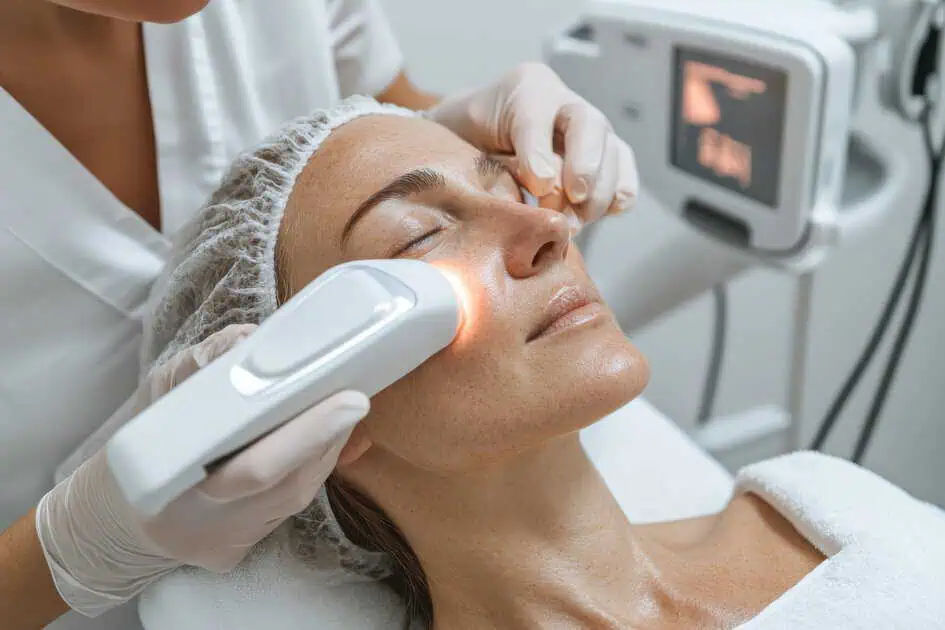The human nervous system is a complex network of nerve cells that transmit signals between the brain and different parts of the body. Neurotoxins are substances that can affect nerve cells, disrupt the communication between nerve cells, and interfere with the normal functioning of the nervous system.
Are you considering using neurotoxins like Botox to reduce the appearance of wrinkles? While the word “neurotoxin” may sound intimidating, the reality is that cosmetic neurotoxins have been proven safe and effective for many people looking to rejuvenate their appearance. By temporarily blocking muscle contractions, these treatments can smooth out wrinkles and give you a more youthful, refreshed look.
In this article, we’ll explore the science behind neurotoxins, how they work, and the positive effects they can have on your appearance.
What are neurotoxins?
Cosmetic neurotoxins are a type of injectable treatment that is designed to reduce the appearance of wrinkles and fine lines on the face.
- Botox: A brand name for a type of botulinum toxin, which is used for a variety of therapeutic and cosmetic purposes. Botox injections can temporarily paralyze muscles and reduce the appearance of wrinkles.
- Dysport: A brand name for another type of botulinum toxin used for therapeutic and cosmetic purposes like Botox.
- Xeomin: A brand name for a botulinum toxin that is used to treat muscle spasms and reduce the appearance of wrinkles. Unlike Botox and Dysport, Xeomin contains only the active neurotoxin and no additional proteins.
These neurotoxins temporarily block the signals between nerves and muscles, preventing muscle contractions and smoother skin.
When injected into specific facial muscles, cosmetic neurotoxins can temporarily reduce the appearance of wrinkles and fine lines caused by facial expressions. It can include crow’s feet, frown lines, and forehead wrinkles.
How do neurotoxins affect the nerves/nervous system?
Neurotoxins can significantly affect the nervous system, particularly nerve cells, and communication between them. These effects can vary depending on the neurotoxin type.
Neurotoxins target specific nerve cell components, including the cell membrane, ion channels, and synaptic vesicles. It can result in various effects, including altered neurotransmitter release and changes in the electrical properties of nerve cells.
One of the primary ways that neurotoxins disrupt the nervous system is by interfering with the normal communication between nerve cells. Nerve cells communicate with each other by releasing chemicals called neurotransmitters into the spaces between cells, called synapses. These neurotransmitters bind to receptors on the surface of other nerve cells, transmitting the signal from one cell to the next.
Neurotoxins can interfere with this process in several ways. For example, some neurotoxins can block the release of neurotransmitters, preventing nerve cells from communicating with each other. Other neurotoxins can bind to and activate or inhibit specific receptors on nerve cells, altering how they respond to neurotransmitters.
How do cosmetic neurotoxins work?
Cosmetic neurotoxins, or neuromodulators, are used in cosmetic procedures to temporarily paralyze or weaken facial muscles, reducing fine lines and wrinkles. The most commonly used cosmetic neurotoxin is botulinum toxin, marketed under brand names such as Botox, Dysport, and Xeomin.
Cosmetic neurotoxins work by blocking the release of acetylcholine, a neurotransmitter that is responsible for muscle contraction. By blocking the release of acetylcholine, the muscles in the treated area become temporarily weakened, reducing the appearance of wrinkles and fine lines.
What are the cosmetic uses of neurotoxins?
Neurotoxins like Botox have become increasingly popular in the world of cosmetic treatments. They are known for reducing the appearance of fine lines and wrinkles and can also be used for other cosmetic purposes, including the following:
- Reduction of fine lines and wrinkles on the face, particularly around the eyes, forehead, and mouth: Neurotoxins can be used to reduce the appearance of wrinkles and fine lines on the front.
- Softening of deep creases or furrows on the forehead: Neurotoxins can help ease the appearance of deep wrinkles or folds on the forehead.
- The temporary lifting of eyebrows for a more youthful appearance: Neurotoxins can temporarily lift the eyebrows to give a more youthful appearance.
- Reduction of crow’s feet around the eyes: Neurotoxins can help reduce the appearance of crow’s feet around the eyes.
- Improvement in forming a “gummy” smile caused by excess gum tissue: Neurotoxins can improve the appearance of a “gummy” smile caused by excess gum tissue.
- Diminishing the appearance of chin dimples or “orange peel” skin on the chin: Neurotoxins can help lessen the appearance of chin dimples or “orange peel” skin on the chin.
- Slimming the jawline for a more contoured look: Neurotoxins can slim the jawline and create a more contoured appearance.
- Treatment of excessive sweating (hyperhidrosis) in the underarms, palms, and feet: Neurotoxins can also treat excessive sweating in the underarms, palms, and feet.
What are the risks and side effects of neurotoxins?
While neurotoxins are generally considered safe when administered by a qualified practitioner, there are some short-term risks to be aware of. These can include:
- Pain or discomfort at the injection site
- Bruising or swelling
- Headache
- Nausea
- Flu-like symptoms
- Temporary drooping or weakness of facial muscles
It’s important to note that the risks and side effects of neurotoxin treatments can vary depending on factors such as the type and amount of toxin used, the location of the injection site, and the practitioner’s skill. Choosing a reputable practitioner and discussing any concerns or questions you may have before undergoing treatment is essential.
Conclusion
Neurotoxins have a powerful effect on the nerves and nervous system. These substances can be found in natural and synthetic forms and are used for various therapeutic and cosmetic purposes. By blocking the release of neurotransmitters or disrupting the function of nerve cells, neurotoxins can have a range of effects on the body, from reducing muscle spasms to smoothing out wrinkles.
While neurotoxins can be a highly effective treatment option, knowing the potential risks and side effects is essential. Short-term risks can include pain, swelling, and temporary muscle weakness, while long-term risks may include the development of resistance or changes in facial muscle tone. It’s also essential to choose a qualified practitioner and discuss any concerns or questions you may have before undergoing treatment.
Neurotoxins have revolutionized how we approach various medical and cosmetic conditions. If you are interested in getting neurotoxin treatments, contact us at COMO Aesthetics today!
Read Also About : A Complete Guide on Dermal Filler





